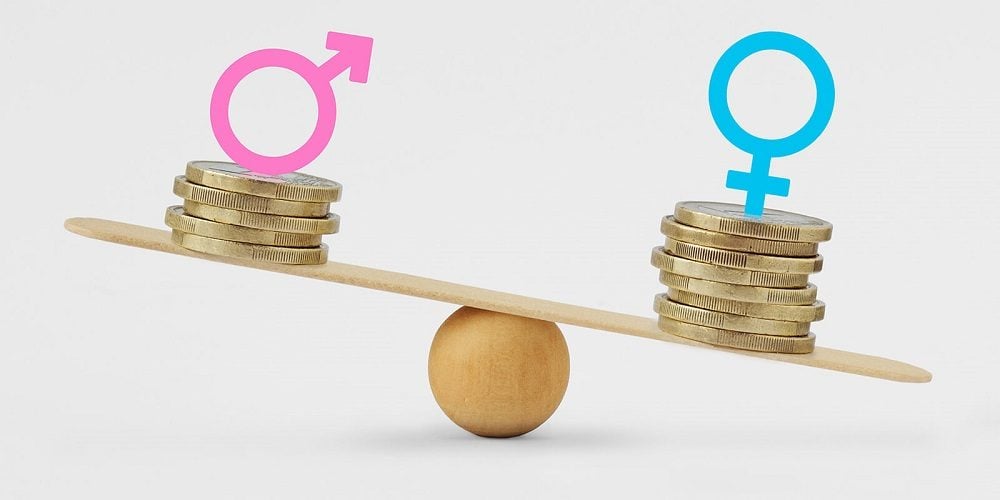
The Gender Wage Gap: A Deeper Look

The gender wage gap has long been a topic of concern and debate worldwide. Despite significant progress in gender equality, disparities in pay between men and women persist in many countries and across various industries. Below, we will delve into some important facts about the gender wage gap, its causes, and its implications for individuals and society.
Defining the Gender Wage Gap
The gender wage gap refers to the disparity in earnings between men and women. It is typically measured by calculating the difference in median earnings between the two genders annually. The gap is often expressed as a percentage, indicating how much women’s earnings lag behind men’s.

Jessica D. Winder/ Linkedin | The gender pay gap is the result of many factors, including race and ethnicity and even disability
The Magnitude of the Wage Gap
The size of the gender wage gap varies across countries. According to data from the Organization for Economic Cooperation and Development (OECD), in 2020, the average gender wage gap across its member countries was around 13.5%. This means that, on average, women earned 86.5% of what men earned. However, it’s important to note that the gap can differ significantly between countries and within specific industries and occupations.
Contributing Factors
Multiple factors contribute to the persistence of the gender wage gap. One significant factor is occupational segregation, where women are overrepresented in lower-paying sectors and underrepresented in higher-paying fields, such as science, technology, engineering, and mathematics (STEM).
Stereotypes and societal expectations also play a role in influencing career choices and limiting women’s advancement opportunities. Other factors include discrimination, lack of access to quality education and training, and the unequal distribution of caregiving responsibilities.

Kaiser/ iStock | The gender pay gap isn’t just a women’s issue—it’s everyone’s issue
The Motherhood Penalty
The gender wage gap tends to widen for women who become mothers. This phenomenon, known as the motherhood penalty, is characterized by lower wages and reduced career advancement opportunities for mothers compared to women without children and men.
It is partly due to biases and assumptions that motherhood negatively affects work commitment and productivity. The motherhood penalty highlights the intersectionality of gender and family responsibilities in relation to earnings.
Long-term Earnings and Retirement Savings
The gender wage gap has long-term implications for women’s earnings and financial security. Lower wages throughout their careers result in reduced lifetime earnings and retirement savings.
As a result, women tend to have smaller pensions and face a higher risk of financial insecurity and poverty in old age than men. This disparity underscores the need to address the gender wage gap for economic well-being and long-term financial stability.

AOA/ Shutterstock | The average woman earns just 82 cents for every dollar earned by a man
Economic Impact
The gender wage gap affects individuals and has broader economic consequences. Studies suggest reducing the gender wage gap could increase economic growth and productivity.
When women’s skills and talents are fully utilized and rewarded, it can contribute to innovation, competitiveness, and a more equitable distribution of wealth. Narrowing the gap could boost consumer spending, as higher earnings empower women to make more substantial economic contributions.
Efforts to Address the Gender Wage Gap
Numerous initiatives have been undertaken to address the gender wage gap. These include implementing pay transparency measures, promoting workplace flexibility and family-friendly policies, challenging stereotypes and biases, and providing equal education and training opportunities. Additionally, some countries have introduced legislation to enforce pay equity and prohibit gender-based wage discrimination.
More in Career
-
How Much Did John Krasinski Make from “The Office”? Revealing His Earnings
John Krasinski, the charming actor audiences know best as Jim Halpert from the beloved sitcom “The Office,” has amassed a significant...
May 27, 2024 -
How Mortgage Brokers Rip You Off and Ways to Prevent It
Buying a home is a thrilling yet undeniably complex journey. Amidst the excitement of house hunting and envisioning your future life...
May 23, 2024 -
Angelina Jolie’s Plastic Surgery – Debunking Myths and Realities
Angelina Jolie has captivated audiences for decades with her undeniable talent and mesmerizing beauty. Her sharp features and striking cheekbones have...
May 17, 2024 -
How Old Do You Have to Be to Buy a House? Exploring Legal Limits
Dreaming of that perfect place to call your own? A cozy haven bathed in afternoon sunlight, a backyard begging for barbecues...
May 11, 2024 -
How to Quit a Job Without Burning Bridges?
So, it’s time to say goodbye. Maybe you’ve landed your dream job, or perhaps you’re embarking on a new adventure. Whatever...
May 1, 2024 -
What Credit Bureau Does Navy Federal Use for Credit Card Approvals?
When it comes to choosing a credit card, understanding the behind-the-scenes processes can make a world of difference. So, you’re probably...
April 25, 2024 -
Has the FBI Arrested P Diddy? What You Need to Know About P Diddy Arrest
In recent developments that have captivated the public and media alike, the homes of Sean “Diddy” Combs, also known as Puff...
April 17, 2024 -
3 Easy Ways to Cash in Your Savings Bonds
Online With a TreasuryDirect Account In the age of digital banking and online investments, managing your savings bonds electronically is a...
April 11, 2024 -
How Employees Can Be Motivated By Their Own Work?
If there is one question every employee asks, it is: What makes a job fun and motivating? Well, this is not...
April 4, 2024














You must be logged in to post a comment Login